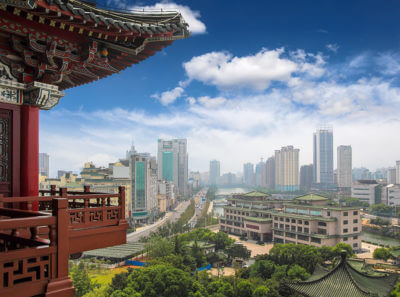News
From the Traditional to the Modern: Mediation in China

Mediation has been part of China’s cultural fabric for thousands of years. The process of a respected neutral assisting parties in the resolution of a dispute has existed since ancient times.
As China evolved from its ancient past into a feudal society, to imperial, to the present day, expectations of mediation have changed. Modern China understands mediation as an effective dispute resolution mechanism, and it is adapting the tradition of mediation to the necessities of modern day commerce, social norms and political systems.
Today, China recognizes the importance of mediation, and mediators are more than wise village elders roaming the countryside. Mediators need professional training, institutional and legal support, and access to technology. Professional mediation training programs, court annexed systems, legislative reform, and online dispute resolution are all hot topics in modern Chinese Alternative Dispute Resolution.
China is currently undergoing a push toward the Rule of Law. This is a positive development, but it has resulted in a surge in litigation. People increasingly want their day in court, and the courts are backlogged. Drawing upon China’s cultural history, the ancient Chinese tradition of mediation will have an even larger role to play in the development of China’s future.
Types of Mediation in China
Today, China uses five broad types of mediation. The most regularly used types are “People’s Mediation,” also known as “Civil Mediation” and “Judicial Mediation.” People’s Mediation is conducted by grassroots community mediators. Judicial Mediation is conducted by judges. Other forms of mediation are “Administrative Mediation,” conducted by government officials, “Arbitral Mediation,” conducted by arbitral administrative bodies, and “Industry Mediation,” conducted by respected associations within a particular industry.
People’s Mediation is organized by “People’s Mediation Committees” (PMCs). PMCs are established under the Chinese Constitution as autonomous organizations, whose mission is to mediate civil disputes. PMCs and their mediators might exist in a village, a residential block, or a factory work unit. Today, there are about 4 million people’s mediators in China, far more than the number of judges or lawyers.
Judicial Mediation is performed by judges, usually prior to a trial. In many cases, a judge is required to first try to mediate a case. If the parties reject the mediation, or if no settlement results, the case proceeds to trial with the same judge adjudicating the case. About 30% – 40% of court cases are settled by mediation.
New Developments in Mediation in China
While mediation has many benefits, there have been concerns that the standard of mediation must improve to better serve modern Chinese society. China has been looking at combining the positive concept of harmony and dispute resolution embedded within traditional Chinese mediation, with the norms and expectations of modern international ADR practices. The Central Chinese Government has been pushing five significant changes.
The first change is a greater focus on personal rights. Traditional mediation has its origin in Confucian ethics, where mediators persuaded parties, sometimes quite authoritatively; to reflect on their own mistakes, give up their own interests and compromise to settle disputes. Making the dispute disappear for the betterment of the group was more important than the desires and rights of the individuals involved.
As China pushes toward Rule of Law and provides more rights to its citizens, however, the Chinese people have been looking to lawsuits to enforce their rights, seeing traditional mediation as unable to provide the relief they desire. In order to match the expectations of a more rights-conscious and individually focused society, modern mediation is more about the rights of the parties, than the overall harmony of the group.
The second change is the professionalization of mediation. Although China has a vast number of mediators, almost none of them have received professional training. People’s Mediation Committees are usually underfunded, most mediators are either poorly paid or entirely voluntary, and almost all mediators are part-time.
Today, more resources are being used to train and educate mediators, in order to provide People’s Mediation Committees with better resources. Professional mediation organizations have emerged in insurance, securities, intellectual property and other sectors, and China has begun to see the emergence of its first full-time mediators.
The third change is collaboration between mediation bodies, in particular, between courts and professional non-judicial mediation organizations. Parties can resolve their disputes at a mediation organization and then have their settlement award confirmed by a court. Likewise, courts can refer cases to mediation organizations, or invite mediation organizations to provide advice, recommendations and assistance to the courts.
The fourth change is the institutionalization and legislation of mediation. China has enacted a “People’s Mediation Law,” and it has amended the “Civil Procedure Law” to outline forms of mediation, qualifications for mediation, selection of mediators and procedures for judicial confirmation of mediated settlements.
The fifth change is the use of modern technology and online dispute resolution. The Supreme Court established a national online dispute resolution platform www.fayuan.com in 2017. Within one year, over 1,000 courts and 12,000 mediation organizations had joined this platform. Through this online mechanism, parties can apply for mediation, select a mediator, attend via video, and sign an agreement through their cell phone, tablet or computer.
In addition, the Zhejiang province government has set up a comprehensive dispute online resolution platform yundr.gov.cn, which provides diversified services including: consultation, evaluation, mediation, and arbitration. In late summer 2017, the first Internet court was established in Hangzhou, specializing in handling Internet-related cases, to cater to the increasing number of online disputes.
By Jiang Heping and Andrew Wei-Min Lee, Senior Fellows-China, Weinstein International Foundation

